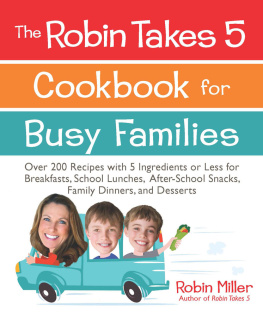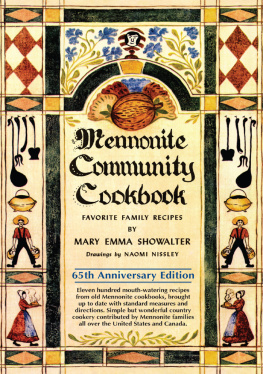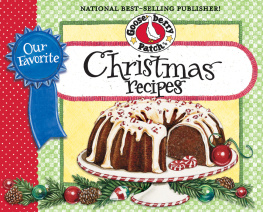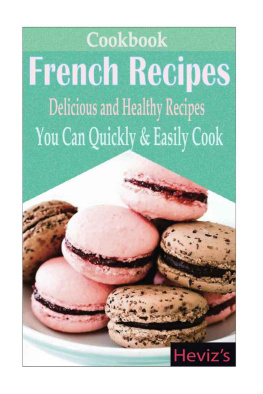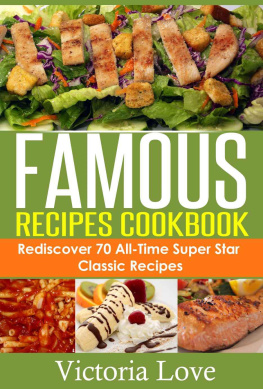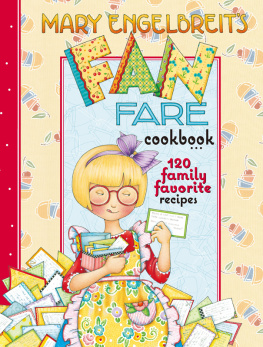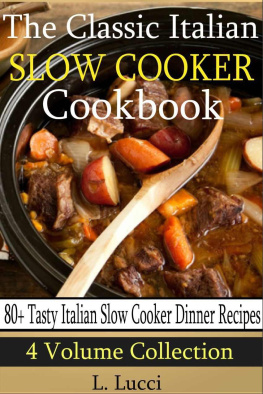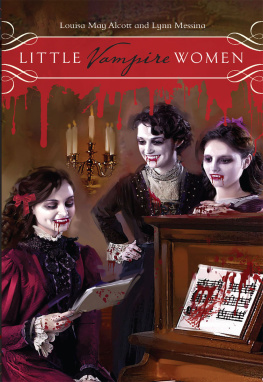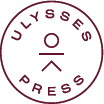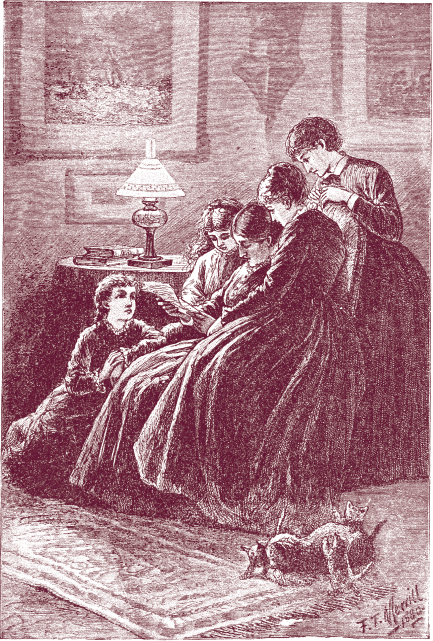
THE
Little
Women
COOKBOOK
Novel Takes on Classic Recipes from Meg, Jo, Beth, Amy, and Friends
Jenne Bergstrom
- AND -
Miko Osada
Text copyright 2019 Jenne Bergstrom and Miko Osada. Design and concept copyright 2019 Ulysses Press and its licensors. All rights reserved. Any unauthorized duplication in whole or in part or dissemination of this edition by any means (including but not limited to photocopying, electronic devices, digital versions, and the internet) will be prosecuted to the fullest extent of the law.
Published in the United States by:
ULYSSES PRESS
P.O. Box 3440
Berkeley, CA 94703
www.ulyssespress.com
ISBN: 978-1-61243-959-4
Little Women illustrations and quotes are from the 1896 edition published by Little, Brown, and Company written by Louisa May Alcott with illustrations by Frank T. Merrill and Edmund H. Garrett.
Acquisitions editor: Casie Vogel
Managing editor: Claire Chun
Editor: Lauren Harrison
Proofreader: Kate St. Clair
Front cover and interior design: Malea Clark-Nicholson
Little Women illustrations from scans by the Internet Archive courtesy of the New York Public Library: pages ,
Artwork from shutterstock.com: silhouettes fresher; food and equipment icons Kraphi and Ku_suriuri; line ornaments Roberto Castillo
Photographs from shutterstock.com: omelet Evgeniya863; white cake Malivan_Iuliia; lemonade and lemon water Africa Studio; roast beef Lisovskaya Natalia; catsup Vania Georgieva; peach pie Tammy Venezia; seeded muffins SMarina; sweet potatoes MShev; apple jelly picturepartners; roast chicken Koliadzynska Iryna; raspberry ice cream pearl7; French chocolate Elena Pyatkova; charlotte rosse Nigina Sharipova; pink ice cream Stephanie Frey; potato rolls cesarz; pickled eggs Olga Markova; cale-cannon Monkey Business Images; coffee Sunny Forest; English muffins Stephen Gibson; biscuits Brenda Carson; tea SedovaY
IMPORTANT NOTE TO READERS: This book is independently authored and published and no sponsorship or endorsement of this book by, and no affiliation with, any trademarked brands or other products mentioned within is claimed or suggested. All trademarks that appear in ingredient lists and elsewhere in this book belong to their respective owners and are used here for informational purposes only. The author and publisher encourage readers to patronize the quality brands mentioned in this book
This book is dedicated to our parents, who raised us to be readers and eaters.
Contents
Preface
If youve picked up this book, were guessing that youve probably already read Little Women, or at least watched one of the many movie and TV adaptations. But in case youre a more casual visitor, heres a quick recap: The story follows four sisters, Meg, Jo, Beth, and Amy, who live in New England during the American Civil War era. Their father is away as a chaplain in the Union Army and their finances are not in great shape, but they do their best to enjoy life and improve themselves despite difficult times. Over the 10 years that the book covers, they grow from idealistic teenagers to mature adult women (with one sad exception). Even though many details of daily life have changed, the characters are so lovable and realistic that Little Women has been in print continuously for over 150 years! We both read our copies to pieces as children and teens, and we continue to find new things to enjoy in the story as adults.
We, the authors of this cookbook, are librarians by day and spend our free time making food and beverages from our favorite stories. Re-creating fictitious dishes is an immersive, 4D experience of our most beloved books. Especially in Little Women, where the novel centers on domestic life, the menus the characters choose and enjoy give us hints and insights about their personalities and priorities, and help us better understand them. Having a themed meal makes it that much easier to pretend were in that erawe think of the food as an extra detail to cosplay! And so we asked the question: What exactly would the March sisters have eaten? After perusing hundreds of 19th-century recipes (or receipts, as they called them back then), we present you this book as our response to this worthy query.
A Bite-Sized History
Lets start with a little history of Northern Civil Warera cuisine. New Englanders, as descendants of Puritans, liked meals of baked or stewed meat, boiled vegetables, and pie.
Food Is Trendy
Going through old cookbooks makes you realize that food is as trendy as fashion. Dishes, ingredients, and culinary methods that were popular in the 1800s might surprise or weird us out today, just as the idea of wearing a hoopskirt daily is decidedly unappealing to most modern readers. For example, we prefer to eat vegetables al dente, so to us, it seems like Victorians cooked theirs for a ridiculously long time. (They want us to boil the summer squash for 45 minutes!?) More differences between Americans then and now: Victorian bakers were reaching for their nutmeg where we would add vanilla, and nutmeg was also as common in savory dishes as pepper. We struggled to find a cookie recipe from the period, but there were endless options for blanc-manges and puddings. Finally, there are whole genres of cooking that arent included in the typical American repertoire anymore. Sweetmeats, for example, included preserved and candied fruits. And in most 19th-century cookbooks, theres a chapter devoted to invalid cookery, or food for the sick, since medical care was usually administered at home. for more details!)
Cooking Was a Chore
Even for the most enthusiastic 21st-century chef, cooking can still feel like a chore sometimes. But imagine if you lived in the 1800s, when the whole process was a gigantic pain. First, youd have to get the ingredients ready. Wait, but there was no one-stop grocery store, so shopping meant visiting multiple shops. Food was only available according to season: fresh produce in summer and early autumn, shellfish in winter, and lamb in spring. (Take a look at What Shall We Eat? A Manual for Housekeepers, an 1868 cookbook that suggests menus for every day of the year. Its fascinating!) Chicken is a standard dinner meat now, but back then, poultry was considered fancy because you had to take the extra step of plucking the feathersyou might have even bought it live from the butcher, so youd have to kill it first. You would also have to tend to the home garden and livestock, if you had any.
And youre still not ready to begin cooking. Youd have to pump and haul water, carry coal, chop wood, and start and watch the fire. This last task was no small feat. Ovens had no handy thermometers or switches, so you had to know how to control the temperature by building the fire a certain way. Thats why old recipes dont say, Bake for 45 minutes at 350F. Instead, their instructions are more like, Bake in a quick oven till done. Helpful, right? Victorian cookbooks assume readers have a lot of prior knowledge, and they often dont list specific ingredient amounts either. Thats why their directions can read like the Technical Challenge on
Next page


